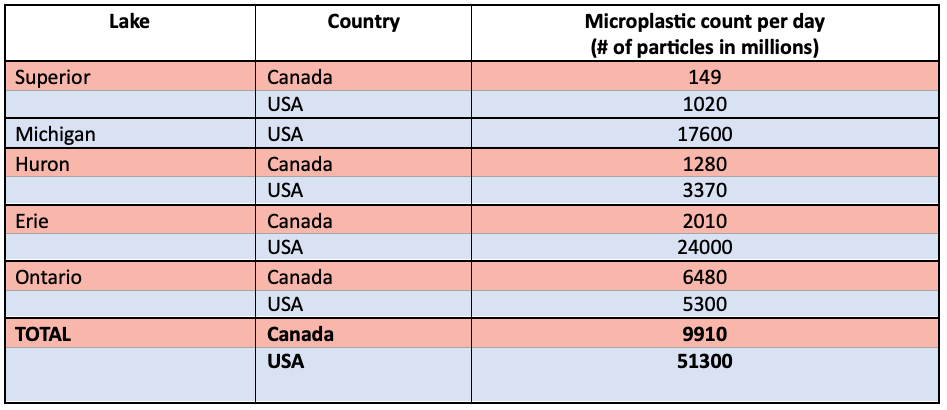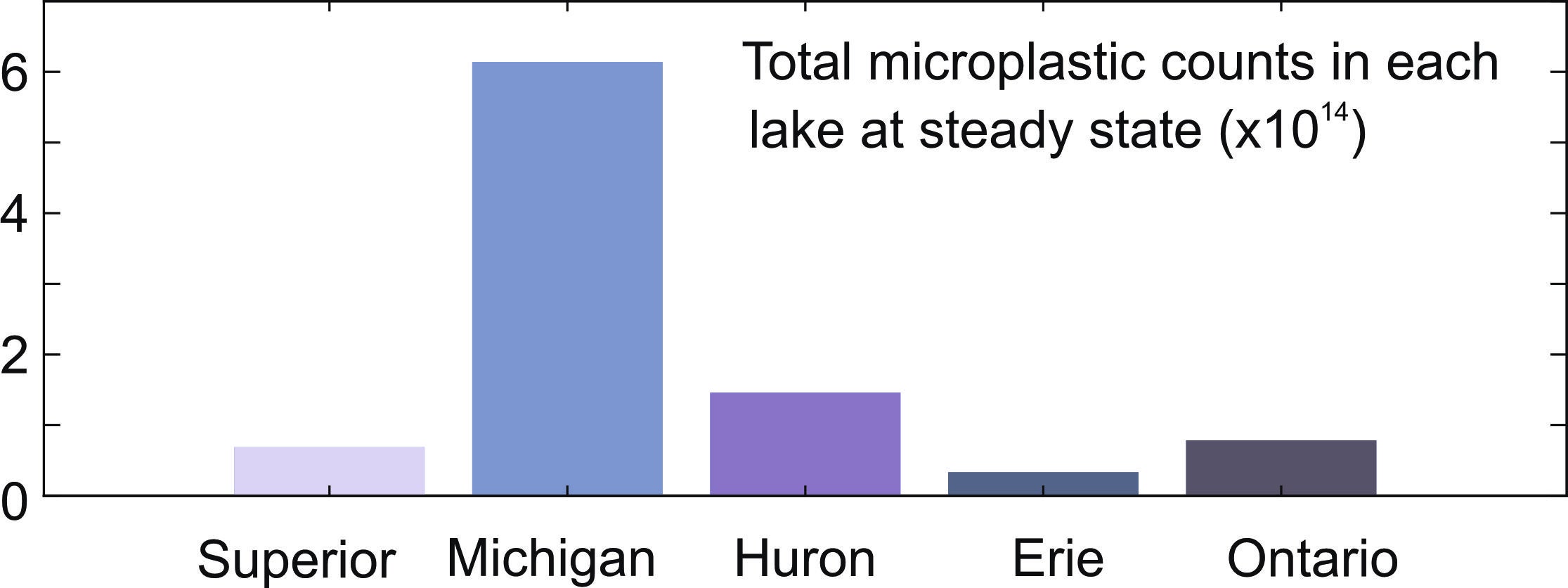A first look at counting microplastics coming from wastewater treatment plants in the Great Lakes
By Lewis Alcott
In the Great Lakes region, most of the water from local homes and businesses are processed by wastewater treatment plants (WWTPs) before being discharged back into the environment. While not specifically designed for the purpose of removing microplastics, most WWTPs have a 70 per cent removal efficiency, meaning that as much as 30 per cent of the microplastics entering the system are flowing into the Great Lakes. This means that WWTPs can be considered significant point sources of microplastic pollution in local water bodies.
In this project, we’re trying to estimate the number of microplastics entering the Great Lakes from WWTPs each day, and to determine the ultimate destination of these particles on a lake-by-lake and country-by-country basis. To do this, we began by identifying how many microplastic particles enter WWTP systems. We used information about the amount of mismanaged plastic waste in each of the Great Lakes watersheds using an existing dataset created by Lebreton and Andrady (2019) (see map in Figure 1). We then applied a simple relationship between mismanaged plastic waste and microplastic waste, based on previously available WWTP data (Gies et al., 2018; Lebreton and Andrady, 2019), to estimate the number of microplastics reaching the WWTPs in each watershed.

Figure 1: Mismanaged plastic waste within each of the Great Lakes watersheds. Based on data from Lebreton and Andrady, 2019. The darker the blue, the higher the rate of plastic waste.
To estimate the number of microplastic particles discharged from the WWTPs to the lakes, we estimated the percentage of microplastics being removed by the WWTPs. The fraction removed through treatment depends on the level of processing within the WWTP, so we based our estimates on the relative proportion of WWTPs with primary, secondary, and tertiary technologies within each watershed in each country.
The final step was to simulate the flow of microplastics between the lakes. We did this using a simple Great Lakes water balance model which tracks the flow of water and other materials between the lakes. Using this model, we were able to calculate the relative contributions of each watershed to the microplastic counts in each lake (Figure 2).
Preliminary results suggest an estimated 38 billion microplastic particles are being exported from Lake Ontario into the St. Lawrence River every day from WWTPs. Of this, 81 per cent is coming from the US and 19 per cent originates in Canada. On a lake-by-lake basis, Lake Erie is the largest contributor at 43 per cent, followed by Lakes Ontario, Michigan, Huron and Superior (25%, 23%, 7%, and 2%) respectively. Overall, these results tell us that 75% of the total WWTP-sourced microplastics entering the St. Lawrence River (via Lake Ontario) originate from outside of the Lake Ontario watershed.

Table 1: Results showing estimated total number of microplastic particles discharged from WWTPs by watershed and country on a daily basis.
From here, researchers are going to continue to improve the model by including other sources of microplastics to the Great Lakes such as atmospheric deposition and natural surface runoff that do not pass through a WWTP. This will help us develop a comprehensive mass balance model for the Great Lakes that considers all major sources of microplastics within region.
Once the model is complete, we will be able to use it to see the impact of various pollution mitigation strategies to determine which ones will be most effective at limiting microplastic loading to the Great Lakes. Be sure to subscribe to the Microplastics Fingerprinting newsletter to receive further updates on this work.

Figure 2: Bar graph shows total microplastic counts in each lake estimated by the model.
References
Geis, E. et al. (2018) Retention of microplastics in a major secondary wastewater treatment plant in Vancouver, Canada. Marine Pollution Bulletin. 133 (2018)
Lebreton, L. and Andrady, A. (2019) Future scenarios of global plastic waste generation and disposal. Palgrave Communications. 5, 6 (2019)